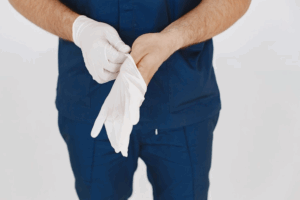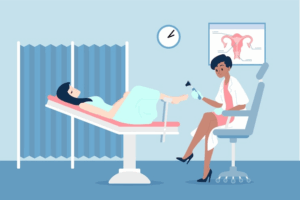Facing azoospermia — a condition where no sperm is present in the semen — can be emotionally challenging. For many men, surgery offers a chance to regain fertility. However, recovery after azoospermia surgery is an equally important part of the journey. Proper recovery not only ensures healing but also increases the chances of successful sperm retrieval and future fertility.
In this detailed guide, we’ll walk you through the phases of recovery, tips for faster healing, common challenges, and expert advice to regain your health confidently.
Understanding Azoospermia and Surgical Treatments
Before we dive into recovery, let’s briefly understand the surgeries involved.
There are two types of azoospermia:
-
Obstructive Azoospermia (OA): Blockage prevents sperm release.
-
Non-Obstructive Azoospermia (NOA): The testicles produce little or no sperm.
Surgical treatments vary based on the diagnosis:
-
MESA (Microsurgical Epididymal Sperm Aspiration) – for obstructive azoospermia.
-
TESA (Testicular Sperm Aspiration) – for both OA and NOA.
-
TESE (Testicular Sperm Extraction) and Micro-TESE – for severe cases, especially NOA.
Each surgery type has different recovery timelines, but the core healing principles remain similar.
The First 24 Hours After Surgery
The immediate hours following azoospermia surgery are crucial. Here’s what to expect:
1. Post-Surgery Monitoring
You will be observed for a few hours in the recovery room to ensure there are no immediate complications such as bleeding or severe pain.
2. Common Symptoms
-
Mild to moderate pain at the surgical site
-
Swelling or bruising in the scrotal area
-
Minor bleeding or discharge
-
Nausea due to anesthesia
Tip: Always arrange for someone to drive you home after surgery.
Week 1: The Most Critical Phase of Recovery After Azoospermia Surgery
The first week sets the foundation for a smooth recovery.
Activities:
-
Rest: Bed rest for at least the first 48 hours is recommended.
-
Cold Compresses: Applying ice packs can reduce swelling and pain.
-
Minimal Movement: Avoid unnecessary walking or physical activities.
-
Supportive Underwear: Wear scrotal support or tight-fitting briefs to minimize movement and swelling.
-
Medications: Take prescribed antibiotics to prevent infection and painkillers as needed.
Warning Signs to Watch For:
-
Excessive swelling or redness
-
High fever (above 101°F/38.3°C)
-
Severe pain not controlled by medication
-
Continuous bleeding
If you notice any of these, contact your doctor immediately.
Week 2: Gradual Resumption of Light Activities
By the second week, most men start feeling better but still need to be cautious.
Guidelines:
-
Light Walking: Gentle, short walks can improve blood flow and healing.
-
No Heavy Lifting: Avoid lifting anything heavier than 10 pounds.
-
Hydration and Nutrition: Eat a healthy diet rich in proteins and vitamins to support tissue repair.
Pain and swelling should start subsiding significantly. If they worsen, seek medical advice.
Physical Recovery Timeline Overview
Here’s a general timeline of recovery after azoospermia surgery:
| Time Frame | What Happens? | Activities Allowed |
|---|---|---|
| Day 1–3 | Pain, swelling, and rest are crucial | Strict bed rest |
| Day 4–7 | Swelling reduces, and pain lessens | Light walking, continue medications |
| Week 2–3 | Incisions heal, stitches dissolve (if any) | Resume desk work if pain-free |
| Week 4–6 | Full physical recovery for most patients | Light exercise, avoid intense activities |
| After 6 Weeks | Clearance from the doctor | Normal activities, consider fertility procedures |
Mental and Emotional Recovery
Recovering from surgery isn’t just physical. Emotional well-being plays a vital role, too.
Common Emotional Challenges:
-
Anxiety about surgical success
-
Stress over fertility outcomes
-
Feeling isolated during recovery
Tips for Emotional Recovery:
-
Stay connected: Talk to your partner, friends, or a counselor.
-
Practice mindfulness: Meditation, deep breathing, and gratitude exercises help.
-
Set realistic expectations: Healing and fertility improvements take time.
Remember, healing is a journey, not a race.
Diet for Faster Recovery After Azoospermia Surgery
What you eat can dramatically affect your healing process.
Best Foods for Recovery:
-
Lean proteins: Chicken, fish, tofu — support tissue repair.
-
Fruits and vegetables: Provide antioxidants that reduce inflammation.
-
Whole grains: Fuel your body’s energy needs.
-
Nuts and seeds: Packed with healthy fats for hormone balance.
Avoid: Processed foods, excessive sugar, alcohol, and caffeine as they can slow down healing.
Exercise and Physical Activity After Surgery
Being active is important, but timing matters.
Activity Plan:
-
Weeks 1–2: Only light walking.
-
Weeks 3–4: Resume light stretching or yoga (avoid pressure on groin).
-
After 6 Weeks: Gradually reintroduce gym workouts, running, or cycling with doctor approval.
Never rush back into high-intensity activities without medical clearance.
Pain Management Tips
Pain after azoospermia surgery is usually manageable with medication. However, you can also try:
-
Ice packs: 15–20 minutes on, 1 hour off.
-
Elevating the scrotum Helps reduce swelling.
-
Gentle support: Wearing a jockstrap or snug briefs.
If pain persists beyond three weeks, consult your surgeon.
Sexual Activity After Azoospermia Surgery
Resuming sexual activity too early can risk complications.
When Can You Resume?
-
Most doctors recommend waiting at least 4–6 weeks after surgery.
-
Ensure there’s no pain or discomfort before attempting ejaculation.
Follow-up semen analysis tests will help determine the success of sperm retrieval.
Importance of Follow-Up Appointments
Recovery after azoospermia surgery isn’t complete without post-op checkups.
Follow-Up Schedule:
-
1 week post-surgery: Initial wound check.
-
4–6 weeks post-surgery: Semen analysis (for sperm presence).
-
3 months later: Further semen analysis if necessary.
Following up ensures early detection of any issues and maximizes your chances of achieving fertility goals.
Potential Complications to Be Aware Of
While most men recover smoothly, complications can occasionally occur:
-
Infection: Signs include fever, redness, and discharge.
-
Hematoma: Collection of blood causing severe swelling.
-
Testicular Atrophy: Rare but serious, needs urgent care.
-
Chronic Pain: Some men may experience long-term discomfort.
Choosing an experienced surgeon greatly minimizes these risks.
Real Patient Recovery Stories
Case Study 1:
John, 34, underwent Micro-TESE. With strict adherence to recovery guidelines and healthy lifestyle changes, he achieved natural conception 10 months post-surgery.
Case Study 2:
Ali, 29, faced obstructive azoospermia. After MESA and 6 weeks of recovery, sperm were successfully retrieved and used for ICSI, resulting in pregnancy on the first try.
These stories show that recovery, while sometimes slow, often leads to rewarding results.
Expert Tips for a Smooth Recovery
-
Listen to your body: Rest if you feel tired.
-
Stay positive: Mental attitude affects physical healing.
-
Follow all medical advice, especially regarding medications and wound care.
-
Avoid smoking: It delays healing and lowers sperm quality.
-
Communicate with your doctor: Report any unusual symptoms promptly.
Conclusion: A Successful Recovery is Possible
Recovery after azoospermia surgery is a vital phase that demands patience, care, and commitment. By following medical advice, caring for your body, and maintaining a healthy mindset, you can maximize your chances of healing fully and achieving your dream of fatherhood.
Every man’s journey is unique, but with proper care, the road to recovery can be smooth, and the future can be bright.





